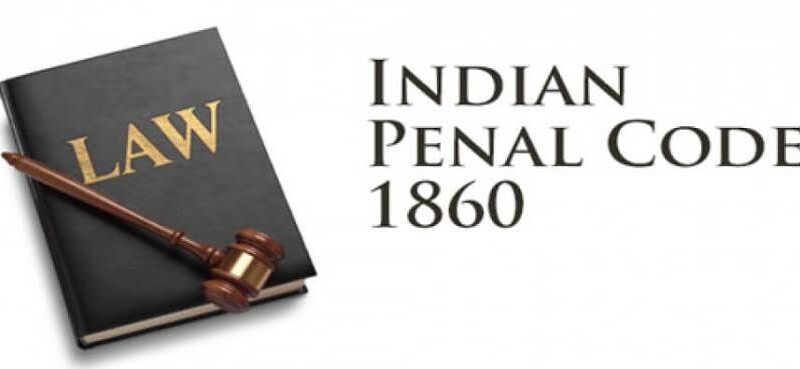Author: Khushi Bansal, A student at University Institute of Legal Studies, Panjab University, Chandigarh
Headline of the Article
The Big Bull Scam of 1992
To the Point
Citation of the Case: (1998) 5 SCC 1
Name of the Court: The Supreme Court of India
Appellant in the Case: Harshad Shantilal Mehta
Respondents in the Case: Custodian and Others
Bench: Justice Sujata V. Manohar, Justice S.P. Kurdukar and Justice D.P. Wadhwa
Judgment Date: 13 May 1998
Abstract
The case of Harshad Shantilal Mehta vs. Custodian and Others (1998) holds substantial importance within Indian legal circles. This matter, adjudicated by the Supreme Court of India, frequently arises in discussions pertaining to financial malpractice and the regulatory framework surrounding securities.
In this case, Harshad Mehta, a prominent stockbroker, was embroiled in a widespread securities scandal within the Indian stock market during the 1990s. The scam, commonly known as the Harshad Mehta scam or the securities scam of 1992, revolved around manipulating stock prices and siphoning funds from banks into the stock market.
The Custodian, appointed under the Special Court (Trial of Offences Relating to Transactions in Securities) Act, 1992, assumed the control over Mehta’s assets as part of legal proceedings. The case ultimately reached the Supreme Court, where the court in its deliberations, addressed various legal facets, including the Custodian’s powers, asset freezing, and the regulatory authority’s role.
The judgment in this case played a role in shaping the legal framework governing financial crimes and securities regulations in India. It underscored the imperative for robust measures to curb financial fraud and safeguard the interests of investors and the integrity of the financial markets.
It’s important to review the specific details of the judgment to grasp the intricacies of the legal issues addressed by the Supreme Court in this case.
Case background
In June 1992, a significant income tax raid targeted multiple locations associated with Harshad Mehta and his family. During this historical raid, a vast amount of shares, securities, as well as books of account and documents, were indiscriminately seized. This action of raid was in tandem with the coordinated efforts alongside investigations by the Joint Parliamentary Committee (JPC), the Central Bureau of Investigation (CBI), and other agencies that had probed the Harshad Mehta scam. Mehta’s primary transgressions involved breaches of capital markets and securities laws, often facilitated through collusion with senior bankers.
Various investigations revealed that the funds enabling Harshad Mehta to establish himself as a major player in the Indian stock markets primarily came from banks. Since he utilized funds obtained from banks, his stock market transactions did not involve unaccounted or black money. In addition, the substantial amount of documentation seized from Mehta indicated that his transactions were well-documented and supported, demonstrating the legitimacy of the funding sources he utilized for purchasing shares.
Subsequently, the Income Tax Department, after adding a substantial amount of Rs. 2014 crores to the total income of Harshad Mehta and his family, issued high-pitched assessment orders. Almost every bank receipt related to the purchase of securities, even those where Harshad Mehta acted solely as a broker, was treated as undisclosed and unexplained income taxable in his hands, despite the lack of justification for such classification.
Several significant additions were made to Mehta’s income under various categories, like money market oversold position, differences received in the money market, profits from the sale of shares in shortage, unexplained stock in the money market, profits from share market trading, and interest on securities in the money market. These additions, constituting substantial undisclosed income attributed to Harshad Mehta, reflected the ignorance and bias of the tax department along with an overly technical approach to taxing incomes where no such incomes existed. Such additions to the total income were totally contrary to the actual circumstances and also lacked justification.
Facts of the Case
The Special Court (Trial of Offences Relating to Transactions in Securities) Act, 1992 is a unique legislative measure aimed at addressing certain specific offences relating to the transactions in securities. These offences typically involve large sums of money obtained by brokers from banks and financial institutions. However, the legal proceedings under this Act, intended for quick prosecution or adjudication of claims, have encountered considerable difficulties due to the Act’s casual drafting, which often requires courts to rely heavily on their judicial discretion and interpretation skills.
The Special Court, operational since June 1992, noted that the time is approaching for the distribution of the assets of two identified parties: the Harshad Mehta Group and Fairgrowth Financial Services Ltd., as per the provisions of section 11 of the Act. However, in view of various potential interpretations of the provisions of section 11, the Special Court has raised several questions of law for clarification.
After hearings involving all the concerned parties, the Special Court has addressed these questions in its impugned judgment, resembling an Originating Summons. Also, the custodian has presented certain queries regarding the interpretation and application of section 11.
Judgment of the Case
The judgment in this case was delivered by the bench of Justice Sujata V. Manohar, Justice S.P. Kurdukar and Justice D.P. Wadhwa. There were a number of issues raised in this case which were adjudicated as follows:
- The initial question under discussion pertains to the interpretation of the term “tax due” as used in Section 11(2)(a).
Held- The judgment quoted the meaning from Block’s Law Dictionary, according to which the term ‘due’ is defined as “owing; payable; justly owed or owing as distinguished from payable.” A debt is usually considered to be due from an individual where that person is the party owing it, or primarily bound to pay, regardless of whether the scheduled time for payment has yet arrived.
The term ‘due’ inherently implies a definite and established obligation or liability, but when considering the timing of payment, there exists considerable ambiguity in the usage of the term, with its precise meaning determined from the context in each instance. Jowitt’s Dictionary of English Law Vol. I, 2nd Edn. at page 669 defines ‘due’ as “anything owing, that which one contracts to pay or perform to another……. As applied to a sum of money, ‘due means either that it is owing or that it is payable; in other words, it may mean that the debt is payable at once or at a future time. it is a question of construction which of these two meanings the word ‘due’ has in a given case.”
- Second question: Do these taxes relate to any particular period or do they cover all assessed taxes of the notified person?
Held- The intent of the Special Court Act is clear. It aims to cover all criminal and civil proceedings related to transactions in securities of a notified individual between 1st April, 1991 and 6 June, 1992. The Special Court is authorized to examine all civil claims and conduct the trial of all offenses concerning such transactions during the mentioned period. Under Section 3(2), it is the assets of such offenders that are attached by the Custodian and distributed under the guidance of the Special Court pursuant to Section 11(2).
Since the Special Court has the authority to examine all transactions in securities between 1st April, 1991 and 6th June, 1992, as well as all claims regarding the attached property, it must also carry out the assessment of the tax obligations of the notified individual incurred during the aforesaid period.
One of the objectives of the Special Court Act is to safeguard the funds owed to banks and financial institutions and to ensure prevention of their misappropriation. To achieve this, the Act includes provisions for attaching assets, verifying claims, and distributing funds. However, before settling the liabilities of a notified individual to banks and financial institutions, Section 11(2)(a) mandates the payment of the individual’s tax liabilities.
In this context, the tax liability should be understood as the tax liability of the notified individual resulting from transactions in securities within the “statutory period” of 1st April, 1991 to 6th June, 1992. For example, if any income tax is due to be paid on income earned by a notified person from securities transactions during this period, that liability will need to be settled before addressing the claims of banks and financial institutions.
- Third Question: When should the tax liability be definitively determined—on the date of the Act coming into force, the date of notification, or the date of distribution?
Held- The contention presented before the court is that only the liability established by a final assessment at the time of the enactment of the Act should be paid under Section 11(2)(a). The other contention is that it should be determined at the time of notification. The third contention proposes that it should be determined at the time of distribution. Given our ruling that tax liability under Section 11(2)(a) pertains solely to the period from 1st April, 1991 to 6th June, 1992, it would be inaccurate to require all liabilities from this period to be conclusively assessed before June 6, 1992(the date of the Act) or the date of notification. The assessment must refer to the date of distribution.
The date of distribution occurs when the Special Court concludes its examination of claims under Section 9A. If, on that date, any tax liability for the statutory period is legally determined, and the assessment is final and binding on the notified individual, that liability will be eligible for payment under Section 11(2)(a), subject to certain considerations.
- Fourth Question: Whether the assessed tax liability for the statutory period requires to be discharged in full under Section 11(2)(a) or whether the Special Court has any discretion in relation to the extent of payment to be made under Section 11(2)(a)?
Held- Banks, with large claims against the notified individuals, assert that the Special Court is not obligated to pay the tax liability in full but has some discretion to the extent to which such liability will be paid.
They emphasized the phrase “shall be paid or discharged in full as far as may be” in Section 11(2) as indicative of the discretion of the Special Court concerning payment of liabilities under Section 11(2)(a). They note that at the time of enactment of the Act or the promulgation of the Ordinance it replaced, the full extent of the funds involved in malpractices leading to the diversion of funds from banks and financial institutions to brokers’ pockets was unknown.
Even after the Janakiraman Committee’s report, a special inter-disciplinary group was required to trace the end use of funds involved in this fraud. Auditors were appointed to check instances of discrepancies where attached assets fell short of problem exposure. As a result, it was expected that funds from attached assets would swiftly be restored to the banks and financial institutions. It was also anticipated that substantial funds would remain after discharging tax liabilities for the relevant period, available for payment to the concerned banks and financial institutions.
- Fifth Question: Whether “taxes” under Section 11(2)(a) would include interest or penalty as well?
Held- In the present case, the court is concerned with penalty and interest under the Income Tax Act. Tax, penalty, and interest are distinct concepts under the Income Tax Act.
The definition of ‘tax’ under Section 2(43) excludes penalty or interest. Likewise, under Section 157, it is stipulated that when any tax, interest, penalty, fine, or any other sum is payable as a result of an order passed under this Act, the Assessing Officer shall serve upon the assessee a notice of demand as prescribed. The provisions for imposing penalty and interest are separate from those for imposing tax.
After examining various authorities, the learned Special Court judge, in paragraphs 61 to 70 of his judgment, concluded that neither penalty nor interest can be construed as tax under Section 11(2)(a). The court concurred with the rationale and conclusion reached by the Special Court in this regard.
- The Special Court has, in the impugned judgment, also dwelt at some length on the question whether it can absolve a notified person from imposition of penalty or interest after the date of the notification.
Held- Since the liabilities mentioned under Section 11(2)(a) pertain only to those arising during the period from 1st April, 1991 to 6th June, 1992, and do not include penalty and interest, this question is irrelevant in this case.
Moreover, any interest or penalty incurred after the date of the notification is not covered under this Act. Nevertheless, it’s important to emphasize that a taxing statute constitutes a comprehensive framework for the imposition of tax, penalty, or interest.

Conclusion
Based on our interpretation of Section 11 of the Special Court Act and Section 3(3) of the same Act, the challenge to the constitutional validity of Section 11 in conjunction with Section 3(3) does not survive. If any bank or financial institution believes that any of the attached properties rightfully belongs to them, they have the option to file a claim before the Special Court to establish their ownership rights over the attached property, or any portion thereof, in accordance with the law. Until such claims are adjudicated upon, the attached properties cannot be sold or distributed under Section 11. Therefore, the transfer case was dismissed by the court.
References
- Judgment- Harshad Shantilal Mehta vs. Custodian and Others (1998) 5 SCC 1
- Case Analysis: Harshad Mehta vs Custodian, available at https://www.legalserviceindia.com/legal/article-6905-case-analysis-harshad-mehta-vs-custodian-1998.html



